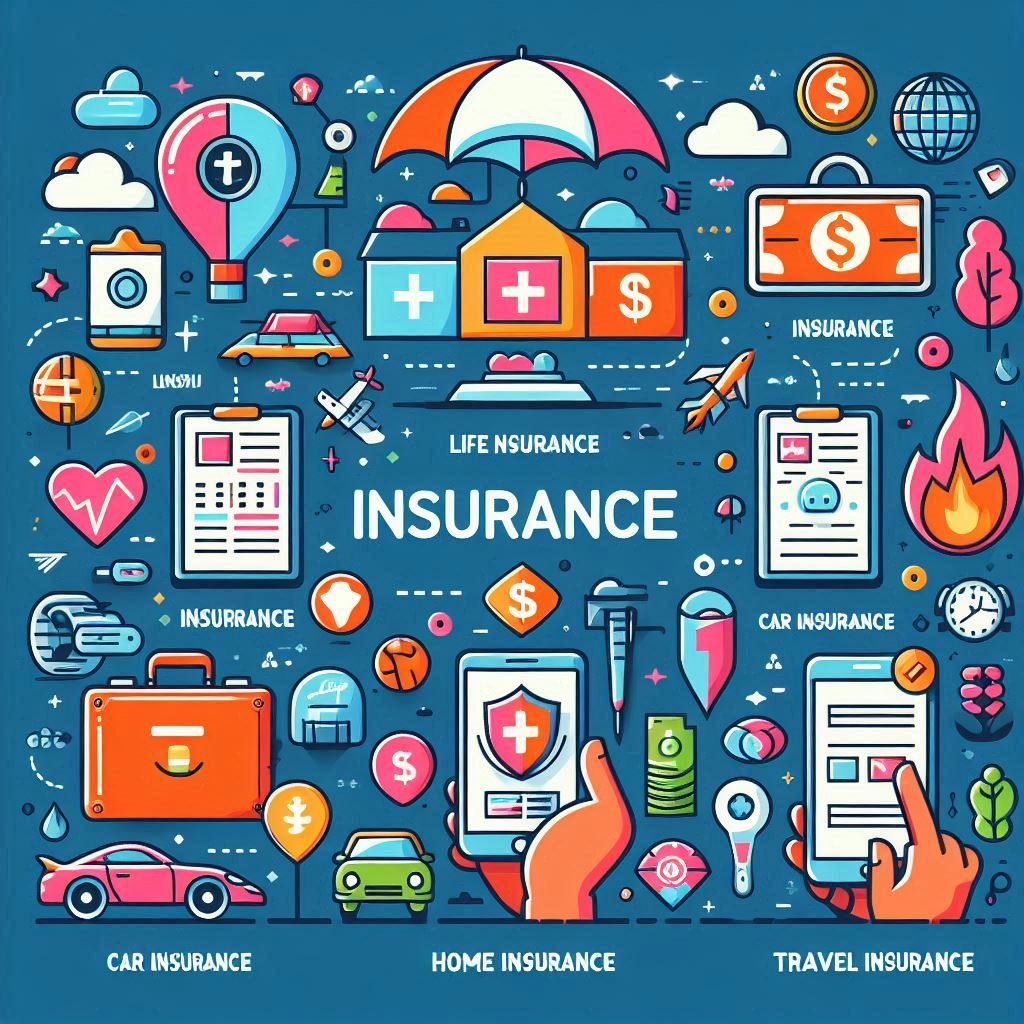Auto insurance is essential for anyone who owns or drives a car. It not only protects you financially in the event of an accident but also ensures that you comply with legal requirements. Understanding the various types of auto insurance coverage and how they work can help you choose the best policy for your needs. This guide will break down the basics in an easy-to-understand way.
What is Auto Insurance?
Auto insurance is a contract between you and an insurance company. You pay regular premiums, and in return, the insurance company agrees to cover certain costs associated with accidents, theft, and other damages to your vehicle. The coverage can include damage to your car, liability for injuries and damages you cause to others, and even medical expenses for you and your passengers.
Why Do You Need Auto Insurance?
Auto insurance is important for several reasons:
- Legal Requirement: Most states require you to have a minimum amount of auto insurance coverage to drive legally.
- Financial Protection: It protects you from paying out-of-pocket for damages and injuries resulting from accidents.
- Peace of Mind: Knowing you have coverage can reduce stress and anxiety about potential accidents and their financial implications.
Types of Auto Insurance Coverage
There are several types of auto insurance coverage, each providing different levels of protection. Here’s a breakdown of the main types:
Liability Coverage
Liability coverage is the most basic form of auto insurance and is required by law in most states. It covers:
- Bodily Injury Liability: Pays for medical expenses, lost wages, and legal fees if you’re at fault in an accident that injures someone else.
- Property Damage Liability: Covers the cost of repairing or replacing property that you damage in an accident.
Benefits of Liability Coverage:
- Legal compliance with state laws
- Financial protection against lawsuits and claims
Consider Liability Coverage if:
- You need the minimum coverage required by law
- You want to protect yourself from financial liability in an accident
Collision Coverage
Collision coverage pays for damage to your car resulting from a collision with another vehicle or object, regardless of who is at fault. This includes accidents with other cars, hitting a tree, or crashing into a fence.
Benefits of Collision Coverage:
- Covers repair or replacement costs for your vehicle
- Provides financial protection in single-car accidents
Consider Collision Coverage if:
- You have a newer or valuable car
- You want to ensure your vehicle can be repaired or replaced after an accident
Comprehensive Coverage
Comprehensive coverage pays for damage to your car caused by events other than collisions, such as theft, vandalism, fire, natural disasters, and hitting an animal.
Benefits of Comprehensive Coverage:
- Covers a wide range of non-collision-related damages
- Provides financial protection against theft and natural disasters
Consider Comprehensive Coverage if:
- You live in an area prone to natural disasters or high crime rates
- You want broad protection for your vehicle
Personal Injury Protection (PIP)
Personal Injury Protection (PIP), also known as no-fault insurance, covers medical expenses and lost wages for you and your passengers, regardless of who is at fault in an accident.
Benefits of PIP:
- Covers medical expenses and lost wages
- Provides coverage regardless of fault
Consider PIP if:
- You want extra protection for medical expenses
- You live in a state that requires or offers PIP coverage
Uninsured/Underinsured Motorist Coverage
Uninsured/Underinsured Motorist Coverage protects you if you’re in an accident with a driver who doesn’t have insurance or doesn’t have enough insurance to cover the damages.
Benefits of Uninsured/Underinsured Motorist Coverage:
- Covers damages when the at-fault driver lacks sufficient insurance
- Provides financial protection for hit-and-run accidents
Consider Uninsured/Underinsured Motorist Coverage if:
- You want protection against uninsured or underinsured drivers
- You want peace of mind in case of a hit-and-run
Medical Payments Coverage
Medical Payments Coverage pays for medical expenses for you and your passengers, regardless of who is at fault in an accident. This can include hospital bills, surgery, and even funeral costs.
Benefits of Medical Payments Coverage:
- Covers a range of medical expenses
- Provides coverage regardless of fault
Consider Medical Payments Coverage if:
- You want additional medical expense coverage
- You don’t have health insurance or want extra protection
Gap Insurance
Gap Insurance covers the difference between what you owe on your car loan or lease and the car’s actual cash value if it’s totaled or stolen. This is particularly useful if you have a new car that depreciates quickly.
Benefits of Gap Insurance:
- Covers the gap between loan/lease balance and car value
- Provides financial protection if your car is totaled or stolen
Consider Gap Insurance if:
- You have a new car with a significant loan or lease
- You want to avoid owing money on a totaled or stolen car
How to Choose the Right Auto Insurance Coverage
Choosing the right auto insurance coverage depends on your needs, budget, and personal circumstances. Here are some steps to help you make the best decision:
Assess Your Needs
Consider your driving habits, the value of your car, and your financial situation. Do you drive frequently or have a long commute? Do you live in an area prone to accidents or natural disasters? Understanding your needs will help you choose the right coverage.
Determine Your Budget
Decide how much you can afford to pay in premiums, deductibles, and out-of-pocket costs. While higher coverage limits and additional types of insurance provide more protection, they also come with higher premiums.
Compare Policies
Shop around and compare policies from different insurance companies. Look at the coverage options, limits, deductibles, and premiums. Online comparison tools can help you see how different policies stack up against each other.
Understand the Policy Details
Read the fine print of any policy you’re considering. Understand what is covered, what is excluded, and any limits or conditions. Make sure you know how to file a claim and what the process entails.
Consider Additional Coverage
Depending on your needs, you may want to consider additional coverage options, such as roadside assistance, rental car reimbursement, or custom equipment coverage. These options can provide extra protection and peace of mind.
Check the Insurance Company’s Reputation
Choose a reputable insurance company with good customer service and a strong financial rating. Look for reviews and ratings from independent agencies to ensure you’re choosing a reliable insurer.
Using Your Auto Insurance
Once you have the right auto insurance coverage, it’s important to know how to use it effectively. Here are some tips to help you make the most of your insurance:
Know What to Do After an Accident
If you’re involved in an accident, follow these steps:
- Check for Injuries: Make sure everyone is safe and call for medical help if needed.
- Move to Safety: If possible, move your vehicle to a safe location to avoid further accidents.
- Call the Police: Report the accident to the police and get a copy of the accident report.
- Exchange Information: Collect information from the other driver(s), including names, contact details, insurance information, and vehicle details.
- Document the Scene: Take photos of the accident scene, vehicle damage, and any injuries.
- Notify Your Insurance Company: Report the accident to your insurance company as soon as possible and provide all necessary information.
File a Claim Promptly
File your claim as soon as possible after an accident. Follow your insurance company’s procedures and provide all required documentation. Keep a record of your claim number and the names of any representatives you speak with.
Keep Track of Repairs
If your car needs repairs, choose a reputable repair shop and keep track of all repair documents and receipts. Your insurance company may have preferred repair shops, which can simplify the process and ensure quality work.
Review Your Policy Annually
Review your auto insurance policy annually to ensure it still meets your needs. Major life changes, such as moving, getting married, or buying a new car, can impact your coverage needs. Adjust your policy as necessary to maintain adequate protection.
Benefits of Having the Right Auto Insurance Coverage
Having the right auto insurance coverage offers numerous benefits:
Financial Protection
Auto insurance provides financial protection against the high costs of accidents, theft, and damages. It helps cover repair and replacement costs, medical expenses, and legal fees, reducing the financial burden on you.
Legal Compliance
Having the right auto insurance coverage ensures you comply with state laws. Driving without insurance can result in fines, license suspension, and legal trouble.
Peace of Mind
Knowing you’re protected in the event of an accident or other incidents provides peace of mind. You can drive with confidence, knowing that you’re financially covered.
Access to Additional Services
Many auto insurance policies offer additional services, such as roadside assistance, rental car reimbursement, and towing services. These services can provide convenience and extra protection when you need it most.
Common Myths About Auto Insurance
“Red Cars Cost More to Insure”
The color of your car does not affect your insurance premiums. Insurance companies base rates on factors like the make, model, age of the car, your driving record, and your location.
“Older Cars Don’t Need Comprehensive or Collision Coverage”
While it’s true that older cars may not need as much coverage as new ones, you should still consider comprehensive and collision coverage if the cost of repairs or replacement would be a financial burden.


